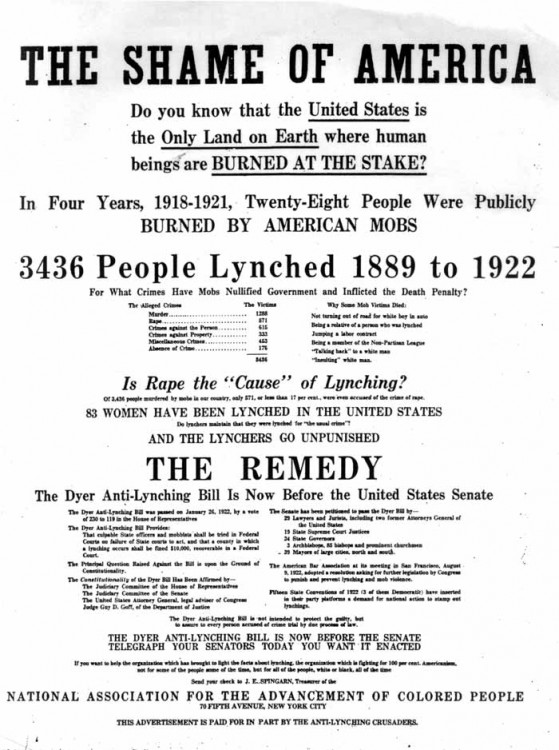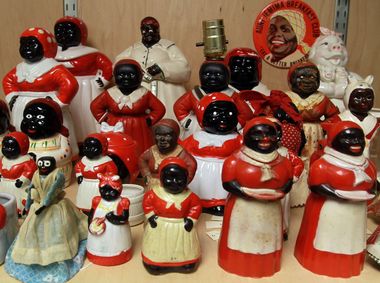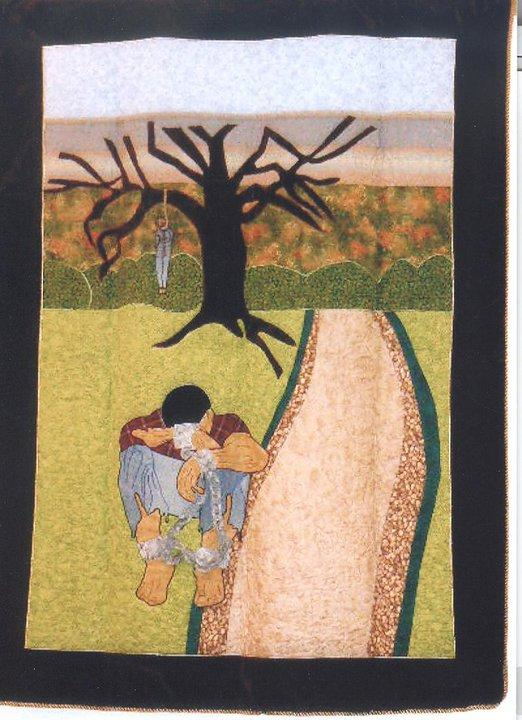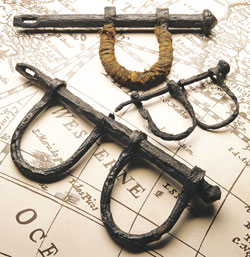America Is Racist. So What Do We Do Now? Activist Lawyer Bryan Stevenson Has Some Answers
Share
Explore Our Galleries
Breaking News!
Today's news and culture by Black and other reporters in the Black and mainstream media.
Ways to Support ABHM?

Hopelessness is the enemy of justice,” says Stevenson, in front of monuments at the National Memorial For Peace and Justice in Montgomery. Alabama. Each of the monuments represents one of the over 800 counties where lynching occurred. The names of the victim or victims are etched on the surface. Joshua Cogan for Newsweek
By Mary Kaye Schilling, Newsweek
Montgomery is the capital of Alabama. It is also a ghost town.
The trip from the airport to the city proper takes 20 minutes, and after you leave the freeway the traffic disappears and the ironies pile up. My taxi driver points out the home of Jefferson Davis, the only president of the Confederacy. A block later, we pass the Dexter Avenue King Memorial Baptist Church, where the Reverend Martin Luther King Jr. presided between 1954 and 1960, followed soon after by the Alabama Confederate Monument. I’m reminded that this is a state where the day celebrating King is shared with Robert E. Lee, commander of the Confederate Army, and where the largest high schools, named for Davis and Lee, are 99 percent African-American…
I get to chatting with the driver, an African-American who looks to be in his 60s. He tells me that he grew up and raised his children in Montgomery, that he loves it here, particularly the slow pace and the barbecue. He asks the reason for my visit. I explain that I’ll be interviewing Bryan Stevenson, the lawyer, activist and director of the nonprofit Equal Justice Initiative. He nods in recognition. I ask if he’s been to EJI’s three-month-old National Memorial for Peace and Justice, which remembers the thousands of lynched African-Americans. “No,” he says. “I don’t need to go. I lived it.” Has racism in Montgomery improved since his childhood? “A little,” he says evenly, “but it will always be here. I don’t expect that will change in my lifetime…”
A few months into Barack Obama’s presidency, Jimmy Carter told NBC Nightly News that he felt “an overwhelming portion of the intensely demonstrated animosity toward Obama is based on the fact that he’s a black man.” He got hammered by the media—America wasn’t racist anymore!—but African-Americans knew what he was talking about. Bigotry had merely been pushed into the closet. And with the surprisingly successful campaign of Donald Trump, and his subsequent administration, that entrenched hatred emerged with a vengeance…
Read the full article here
Read more Breaking News here
View more galleries from the ABHM here
More about Legacy Museum and National Memorial for Peace and Justice here









Comments Are Welcome
Note: We moderate submissions in order to create a space for meaningful dialogue, a space where museum visitors – adults and youth –– can exchange informed, thoughtful, and relevant comments that add value to our exhibits.
Racial slurs, personal attacks, obscenity, profanity, and SHOUTING do not meet the above standard. Such comments are posted in the exhibit Hateful Speech. Commercial promotions, impersonations, and incoherent comments likewise fail to meet our goals, so will not be posted. Submissions longer than 120 words will be shortened.
See our full Comments Policy here.